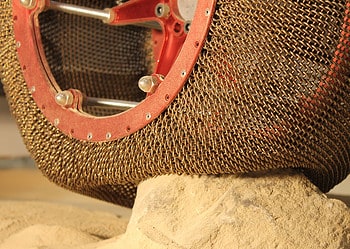If you care about the environment, the climate, or feeding the planet, you should care about ammonia. The world as we know it simply couldn’t exist without it. Ammonia is used in fertilizer, and ammonia-based fertilizer is in large part responsible for the high agricultural yields we enjoy nowadays. Without it, about half of the planet’s inhabitants would run hungry.
However, industrial production of ammonia used as fertilizer is anything but green. The world currently produces about 175 million tons of ammonia per year, using a century-old industrial process that is very energy intensive. The industry is responsible for about 1% to 2% of global carbon emissions, making it one of the dirtiest on Earth.
For decades, researchers have been trying to figure out greener ways to produce ammonia-based fertilizers and now, such a method could finally be in sight.

The traditional way to make ammonia is to strip hydrogen from natural gas using steam and then combine hydrogen with nitrogen. The procedure, called the Haber-Bosch process, released two tons of CO2 into the atmosphere for every ton of ammonia. Now, a group of chemists has found a way to tweak this process.
The main barrier behind making ammonia with less energy has been separating the reactants (nitrogen and hydrogen) without the large temperature and pressure swings needed by its production process. That reaction takes place between 300 and 500 degrees Celsius, but ammonia is then removed by cooling the gas to about – 20C.
To address this problem, the researchers designed and synthesized porous materials (metal-organic frameworks, or MOFs) that bind and release ammonia at moderate pressures and temperatures around 175 C. As the MOF doesn’t bind to the other reactants, the capture and release of ammonia are done with smaller temperature swings.
“A big challenge to decarbonizing fertilizer production is finding a material where you can capture and then release very large quantities of ammonia, ideally with a minimal input of energy,” Benjamin Snyder, study author, said in a statement. “That is to say, you don’t want to have to put a lot of heat in your material to force the ammonia to come off, and likewise, when the ammonia absorbs, you don’t want that to generate a lot of waste heat.”
A green Haber-Bosch process
Many researchers are working on new ways to make the Haber-Bosch process — which dates from the early 20th century — more sustainable. This includes producing hydrogen by using solar power to split water into hydrogen and oxygen and novel catalysts that work at lower temperatures and pressures to reach hydrogen with nitrogen.
However, removing ammonia from the mixture after the reaction has remained tricky. Porous materials, such as zeolites, can’t absorb and release large quantities of ammonia, while other MOFs that researchers have tried often disintegrated in the presence of ammonia, which is highly corrosive. But this wasn’t the case with the new study.
The researchers tried a new variety of MOF that uses copper atoms linked by organic molecules called cyclohexanedicarboxylate to create a rigid and highly porous MOF structure. Ammonia didn’t destroy the MOF and instead converted it into strands of a copper and ammonia-containing polymer with an extremely high density of stored ammonia.
“When you expose this framework to ammonia, it completely changes its structure,” Snyder said. “It starts as a porous, three-dimensional material, and upon being exposed to ammonia, it actually unweaves itself and forms what I would call a one-dimensional polymer. Think of it like a bundle of strings. This really unusual adsorption mechanism allows us to uptake huge quantities of ammonia.”
Snyder and his team found that the MOF could also be tuned to absorb and release ammonia under a large range of pressures, making it more adaptable to whatever reaction conditions are necessary. A process that operates at lower temperatures and pressures would also allow the production of ammonia at smaller facilities closer to farmers rather than at large chemical plants.
While the new porous materials haven’t really solved the problematic carbon footprint of ammonia, they have opened the door to a new way of thinking on how to use metal-organic frameworks in a modified Haber-Bosch process, the researchers explained. The study represents an “important conceptual note” in that direction, they argued.
The study was published in the journal Nature.






